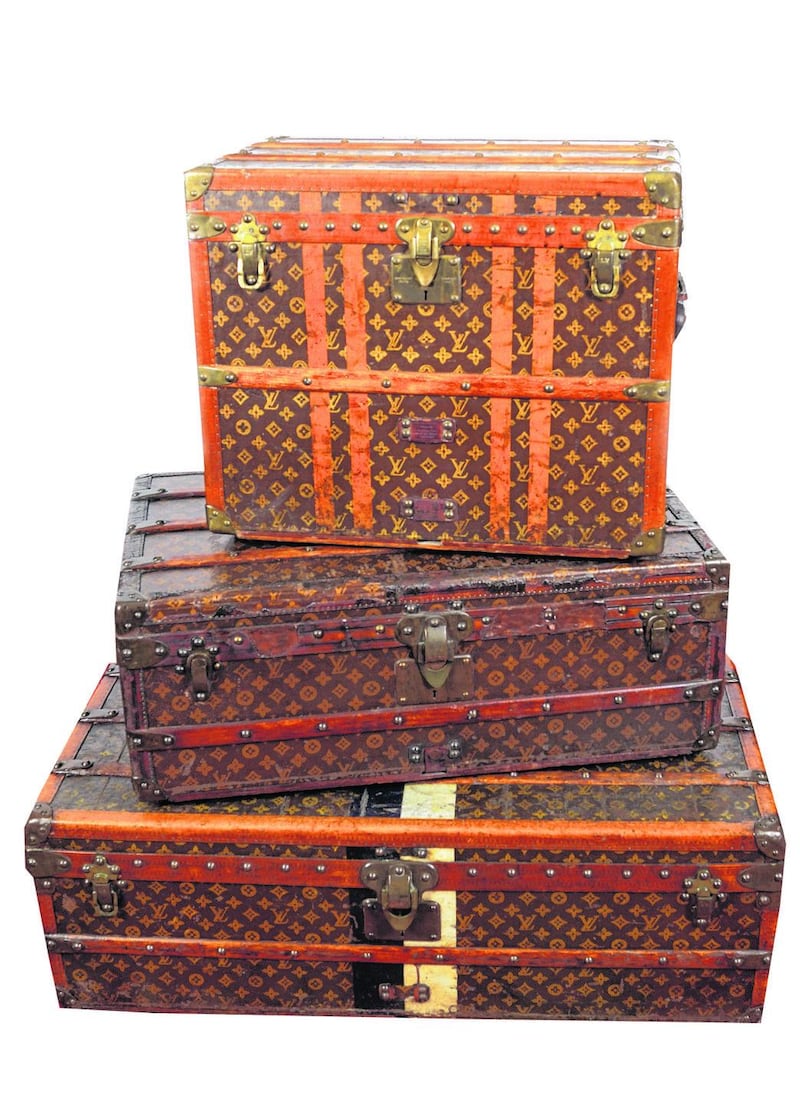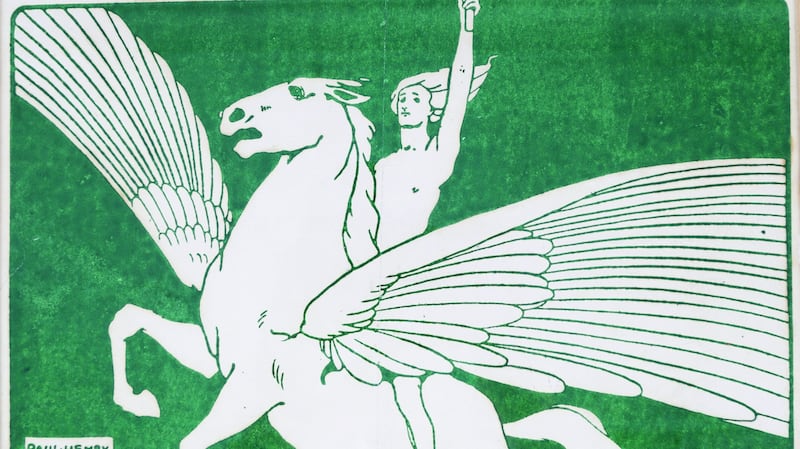In the 19th century, enormous trunks were the luggage of choice for the well-heeled to transport their numerous costume changes around the globe. For the less moneyed, chattels were carried in a humble carpet bag – a heavy-duty portable bag which doubled as a blanket when opened, for travelling in unheated railway cars.
The carpet bag used by David Niven in the 1956 film Around the World in 80 Days, along with three Louis Vuitton Steamer trunks, are among items for auction at Sheppard's Paradigms & the Unexpected two-day sale on February 26th and 27th.
The carpet bag, lot 446 (€800-€1,200), and trunks are being sold by the family of movie producer Mike Todd, who produced the film which won five academy awards including best picture. Todd’s son, Mike Todd jnr, moved to Ireland in 1973 and died in 2002 aged 72 – his family still live here.
Mike Todd, though famous for his contribution to film and theatre and for the development of the Todd-AO widescreen system, is mostly remembered as the third of Elizabeth Taylor’s seven spouses.
He was the only husband the violet-eyed Taylor never divorced – having tragically died in a plane crash just a year after their marriage. The airplane had the unfortunate title The Lucky Liz, and film critics agree that the grief displayed in her onscreen performance as Maggie in Cat on a Hot Tin Roof (1958) was true to life, as Todd was killed in the month the film commenced shooting.
She recounted years later, after a near-death episode with pneumonia, "I went through the tunnel and saw the most wonderful light at the end of it," she told Life magazine. "And I longed to be there. But Mike Todd was at the end of the tunnel, and he told me I had to go back – and live!"
Twenty years after Todd was buried his remains were stolen, as legend had it that Taylor had placed a 10ct diamond ring along with his remains in the bronze coffin. A week later a bag of ashes were discovered close to his original grave, and believed to be those of Todd’s, were removed and interred at a secret location.

The Louis Vuitton canvas Steamer trunks, lots 443, 444 and 445 (€2,000-€3,000 each) bear the initials MT as they were Todd’s personal luggage.
Louis Vuitton was just 16 when he arrived in Paris to work as an apprentice trunk maker, eventually establishing his eponymous label in 1854. His trunks were perceived to be the birth of modern luggage – items became more functional and lighter than before. A new locking system developed by the company in 1886 claimed it was so secure, that not even illusionist and stunt man Harry Houdini could escape from one, though Houdini never rose to the challenge.
The brand is now considered one of the world’s most profitable, with an estimated value of $28.4 billion in 2013, with 460 stores across 50 countries.
Recent collaborations with urban streetwear brand Supreme have created new Louis Vuitton trunks with astronomical prices: the made to order Boite skateboard trunk retails for €46,000, skateboard included, and the Malle Courier for a whopping €68,500.
They are also much sought-after vintage items. In 2017, a Louis Vuitton Steamer trunk sold to an Italian buyer for €7,500 through Adam’s on St Stephen’s Green – well above the estimate of €3,000-€5,000. Last December an aluminium Explorer trunk from 1892, though much rarer than the Steamer, achieved £162,000 (€186,000) at Christie’s in London. They were moveable treasure chests in their heyday but today when used as coffee tables and trophy pieces are more at home in a drawing room than on a ship
The iconic LV monogram was introduced in 1896 by Vuitton’s son George – ironically enough in an effort to make the trunks counterfeit proof – it is today one of the most counterfeited brands due to its luxury item status.

Truly unexpected
A further offering, aptly fitting within the "unexpected" title of the sale is lot 38, a woodcut of Pegasus by Paul Henry, circa 1901-1910, predating his move to Achill. A letter of provenance by Dr S B Kennedy, author of the definitive work on one Ireland's most renowned artists; Paul Henry: Paintings, Drawings and Illustrations, has said the dot used in the signature between the words "Paul" and "Henry" was used by the artist in his earlier work (€8,000-€12,000).

A late entry to the sale, discovered last week in Wexford, is lot 849; a pair of Qing dynasty peach bowls just over five inches in diameter, with a six character mark of Yongzheng (€8,000-€12,000). “There has been great interest in these, as we have had several condition reports requests from Asian buyers. There is broad consensus among the experts we deal with that these are significant pieces, so they are ones to watch and could be the sleeper of the auction,” says Philip Sheppard.
Also included in the 849 lots, is a fine selection of period furniture, 16th-century breastplates and helmets, Persian rugs and a collection of Georgian, Regency and Victorian fireside accessories. See Sheppards.ie























